Volkswagen ID.3 Review 2025: Price, specs & boot space
Written by Andrew Brady
- 2020
- Family hatch
- EV
Quick overview
Pros
- Easy and relaxing to drive
- Impressive electric range
- Welcome updates to the interior in 2023
Cons
- Distracting (and occasionally glitchy) media system
- Interior plastics feel a bit cheap (especially on earlier models)
- Some strong competition out there
Verdict: Is the Volkswagen ID.3 a good car?
"The Volkswagen ID.3 has all the hallmarks of an electric car that was rushed into production. The electrical gremlins that plagued early models have now been dealt with, while its interior has been given a welcome update for 2023. It's now a much more pleasant family hatch... but is a modest facelift enough to keep it fresh in a competitive market? Our Volkswagen ID.3 review reveals all."
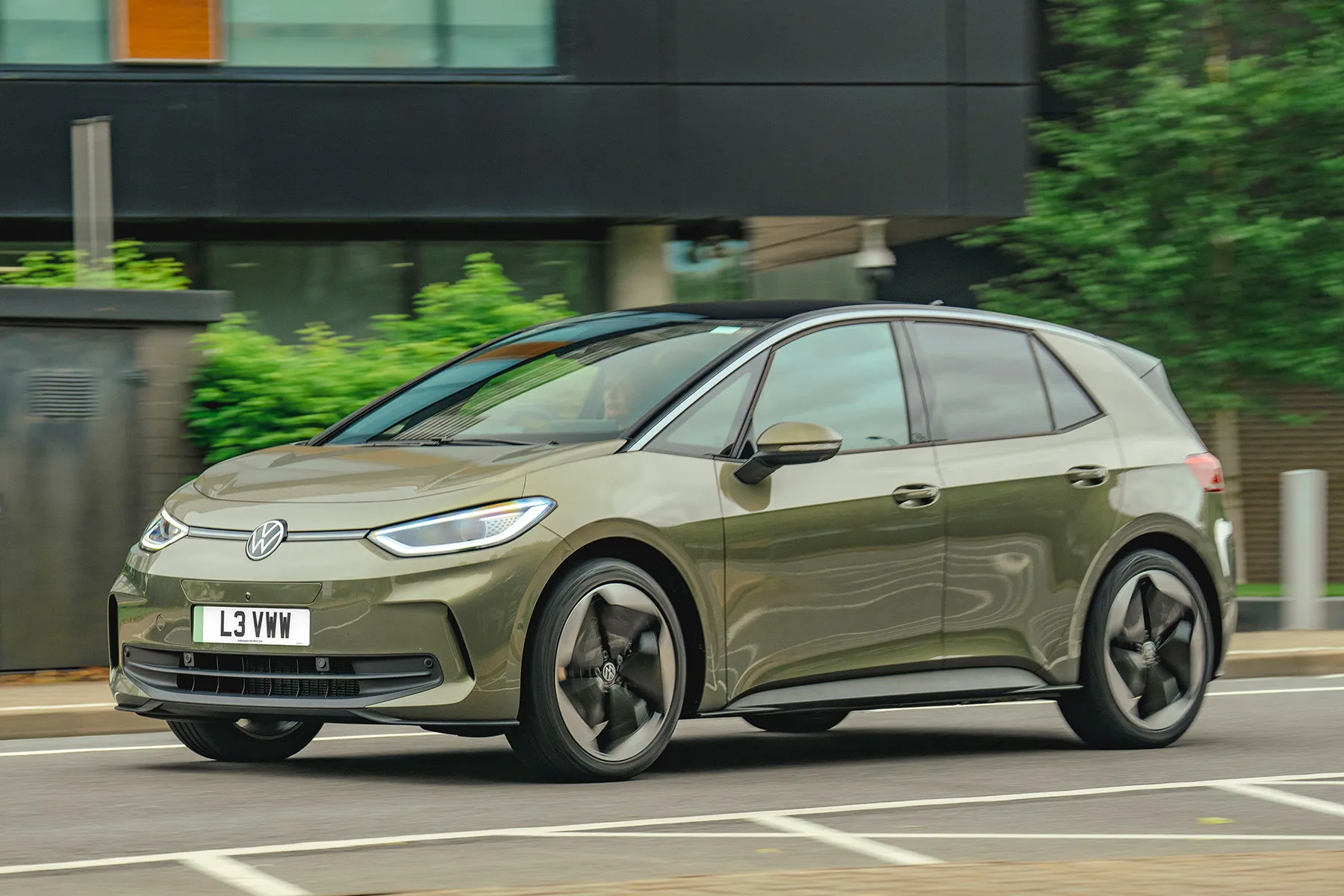
There was quite a lot of hype around the Volkswagen ID.3 when it was launched back in 2020. It was the most significant new VW for a generation, claimed the brand, comparing it to the launches of the iconic Beetle and Golf.
Disappointing, then, that early reviews criticised it for its harsh interior plastics, while owners were left frustrated with clumsy electronics. And that was a time when electric family hatchbacks were few and far between - you had the ancient Nissan Leaf, and that was about it.
Today, the electric family car market is full of very competitive vehicles. It's a wonder VW has managed to sell any ID.3s at all, when it's up against cars like the Renault Megane E-Tech, Kia Niro EV and Tesla Model 3 among many others.
With the updates in 2023, the ID.3 shed the weird black strip across the bonnet, while the bumpers were redesigned. There were also some changes to the badging. Hmm, nothing groundbreaking on the outside, then.
What about inside where the Volkswagen ID.3 needed the most improvement? There are now plusher finishes and more equipment as standard, although the touch-heavy infotainment system is still as irritating as ever.
The Volkswagen ID.3 remains a spacious family car, its dedicated EV platform giving it the edge over cars like the Vauxhall Astra Electric. You'll find a fairly high seating position (due to the positioning of the EV batteries), but it's comfortable and airy inside.
Talking of batteries, there have been several offered during the VW ID.3's lifespan. Buy new now and the range comprsies 52kwh, 58kWh and 77kWh battery packs, the 58kWh version badged the Volkswagen ID.3 Pro and the 77kWh version labelled the Volkswagen ID.3 Pro S.
Don't assume you need the biggest battery pack – while its range of up to 346 miles is certainly impressive (and will attract the attention of Tesla buyers), the middle battery car can manage up to 269 miles and the smallest around 240 miles. You'll be able to travel further without stopping than in many rival models, while the ID.3's now speedier charging makes it a very realistic long-distance electric car.
The Volkswagen ID.3 is easy and relaxing to drive, if not quite as fun as the platform-sharing Cupra Born (or the sporty MG4). The lack of engine noise means it's very refined on the move, while it lets in less exterior noise than the Vauxhall Astra Electric.
The addition of the 52kWh battery in late 2024 dropped the entry price for the ID.3 to just over £30,000. If you're not fussed about having the latest plush dashboard or updated front and rear bumpers, you can save a lot of cash by seeking out a used Volkswagen ID.3. A budget of just £13,000 will get you an early example, while £25,500 buys a nearly-new ID.3.
Looking for a used car for sale? We've got 100s of Volkswagen Approved Used Cars for Sale for you to choose from, including a wide range of Volkswagen ID.3s for sale.
What’s the best Volkswagen ID.3 model/engine to choose?
In the latest line-up, we'd go for the Volkswagen ID.3 Pro over the Pro S. Its range is more than enough for the majority of drivers, while it's well-equipped and slightly faster than the range-topper. On paper, the newer Pure models, introduced in 2024, offer almost as much range for less money, but we haven't had a chance to try them in person yet.
As we touched on above, a used Volkswagen ID.3 could be a great purchase. Again, we'd look for one with the 58kWh battery pack.
What other cars are similar to the Volkswagen ID.3?
If you're looking for an electric car on a budget, you might want to consider a used Nissan Leaf or MG4. The Volkswagen ID.3 has more showroom appeal, but the MG4 in particular represent excellent value for money.
We'd also point you in the direction of slightly newer alternatives like the Vauxhall Astra Electric and Peugeot e-308, as well as SUVs like the Kia Niro EV, Honda e:Ny1 and Renault Megane E-Tech.
Comfort and design: Volkswagen ID.3 interior
"On first impressions, the Volkswagen ID.3 has a cabin that looks just as futuristic as its exterior. It’s nothing you won’t get used to, though - there’s a digital instrument pod behind the steering wheel with a gear selector on the side of it, as well as a 12.9-inch media system perched in the centre of the dashboard."
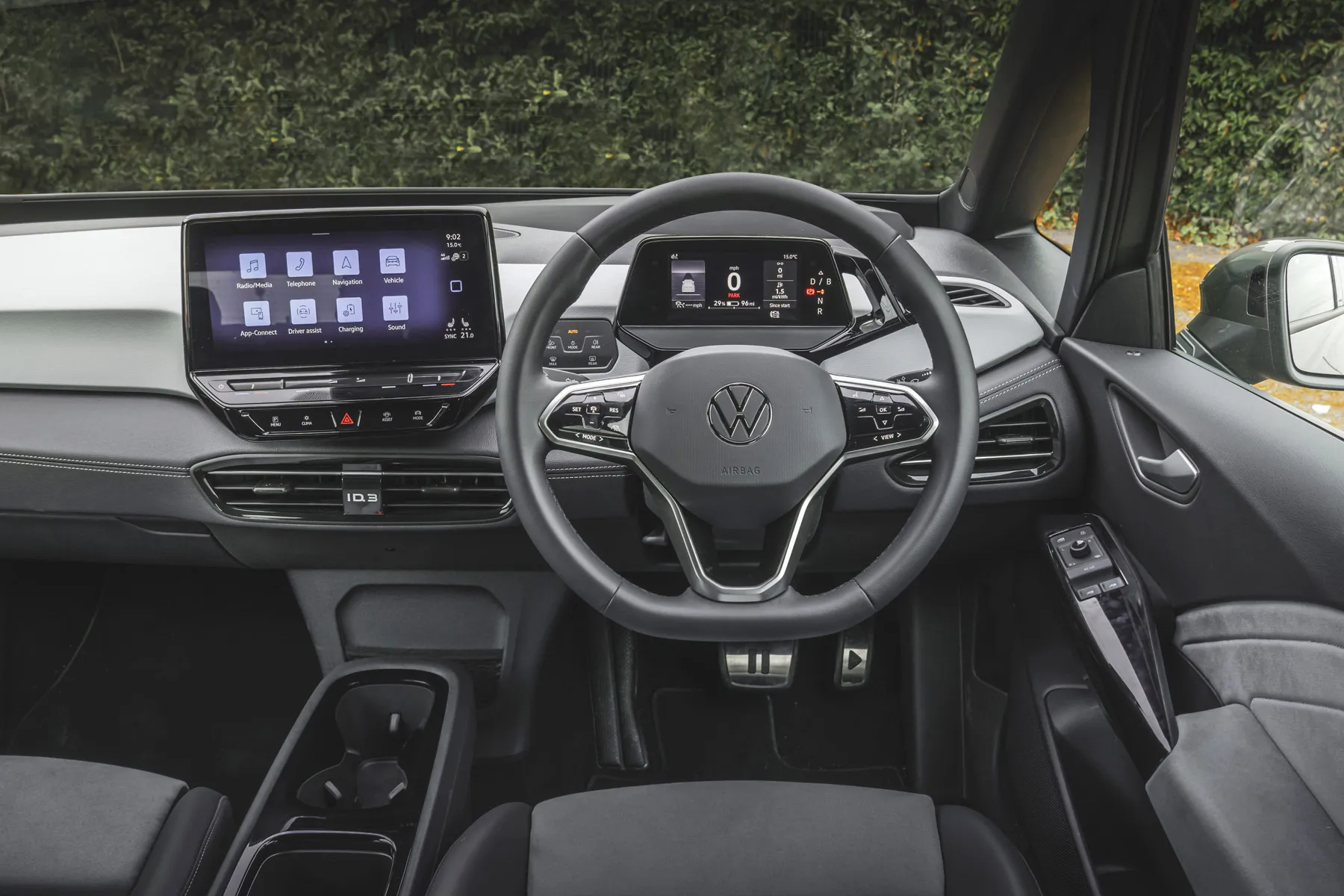
While the ID.3 isn’t an electric SUV (take a look at the VW ID.4 if that’s what you’re after), you sit higher than you do in alternatives like the Vauxhall Astra Electric. Combine this with a useful armrest and excellent all-round visibility, and the cabin feels a fairly relaxed and pleasant place to spend time.
This is helped by a wide colour palette - as much as you can class various shades of black, white and grey as a colour palette. The white bits do help lift the cabin, but we wonder how quickly they might start to look dirty.
With big windows and light-coloured materials, the ID.3’s interior has an airy vibe about it. You can, however, spec a huge panoramic glass sunroof which, we reckon, will lift the cabin even more.
Quality and finish
If you're a Golf owner looking to trade into an ID.3, you might be a bit disappointed with its cabin. It just doesn't feel as clearly class-leading as previous petrol Volkswagen models. The door cards on early models are flimsy, while the hard dashboard looks like something you'd expect in an MG - not a VW.
Interior quality was clearly a big focus for the updated Volkswagen ID.3 in 2023. You now get more soft-touch materials, along with some neat stitching along the dashboard. It still doesn't feel like an Audi Q4 e-tron inside, but it's not as offensively utilitarian as it once was.
Infotainment: Touchscreen, USB, nav and stereo in the Volkswagen ID.3
The 10-inch media system is similar to that you’d find in the latest Golf, with buttons replaced by slightly irritating touch-sensitive ‘sliders’. It’s not the most innovative system to use and there's been fairly widespread criticism of it since the Volkswagen ID.3 was launched in 2020. We expected it to be fixed for the 2023 facelift but - aside from some minor software updates - it remains as distinctly un-user-friendly as before. Shame, but what did arrive was a 12.9-inch infotainment screen.
One way around this is to use the voice command system. This responds to natural voice inputs - tell it “I'm cold” and it detects where you’re sitting and turns on the appropriate heated seat. It’s a bit gimmicky, though, and you’ll soon find its limitations.
As part of the 2023 update for the ID.3, an augmented-reality head-up display is an option. This is a cool (if not groundbreaking) feature that'll display arrows on your windscreen in the direction you want to go at junctions, as well as highlight things like speed limits.
Space and practicality: Volkswagen ID.3 boot space
For a car that’s not much bigger than a Golf (the ID.3's dimensions if you're interested are 4261mm long and 1809mm wide), the ID.3 feels very spacious. There’s loads of headroom in the front and it’s wide enough to prevent awkward arm bashing with your passenger. There’s a plethora of useful storage pockets, too, including fairly big door pockets and a huge centre console bin. There are also two cup holders up front.
Access to the rear is easy thanks to two wide-opening doors. There’s loads of headroom back there and a decent amount of legroom, even for adults. Two USB-C chargers will keep the teenagers happy, while there are also two useful door bins for storing bottles of water and the like. Although there are three seat belts on the back row, we wouldn’t recommend the middle seat should be used for anything other than occasional journeys as it’s quite cramped. There’s also a lump in the floor hindering foot room.
The Volkswagen ID.3's boot space is big enough for a car of this size, able to accommodate up to 385 litres of luggage with the rear seats in use - although a Renault Megane E-Tech or Kia Niro EV can take more. There is quite a lip for hoisting items over, too, and you’d struggle to fit the charging cables in the small underfloor storage area. That’s a bit frustrating.
If you need more room, the rear seats split 60:40 and drop easily enough, although they’re far from entirely flat. With them dropped, the ID.3 can take 1267 litres of luggage.
There are ISOFIX points aplenty, making the ID.3 car an easy car for transporting young children. These are fitted to the rear seats as well as the front passenger seat.
Handling and ride quality: What is the Volkswagen ID.3 like to drive?
"With excellent all-round visibility, light steering and a turning circle that could rival a London cab, the Volkswagen ID.3 is in its element around town."
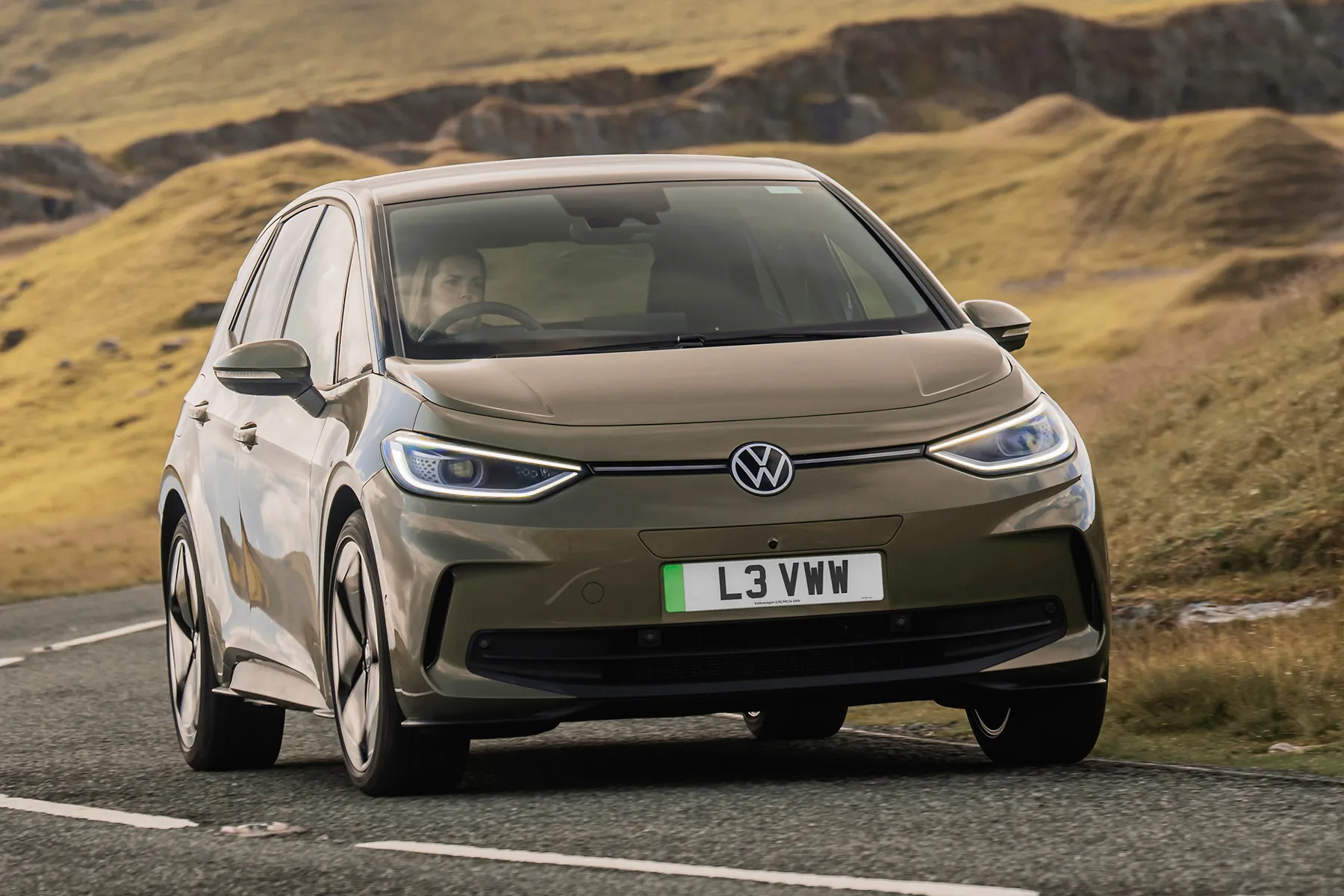
The ID.3 is bigger than something like a Renault Zoe, but there’s plenty of tech on hand to make tight manoeuvring easy. If you're worried about parking, look for an ID.3 with the optional Driver Assistance Pack - this adds a rear-view camera (along with a few other things), which really helps prevent minor bumps and scrapes. All new ID.3s come with front and rear parking sensors, and all but the base version have a rear-view camera and Parking Assistance Plus.
As is often the case with electric cars, the ride is on the firm side. You’ll be warier of speed bumps than in a petrol Golf, for example, but it shouldn’t be a deal-breaker. It’s certainly more compliant than sporty alternatives like the Cupra Born and MG4.
It’s pretty good out of town, too. Its rear-drive layout means it feels quite agile on the open road, although the light steering doesn't really encourage you to chuck it around. That’s not a real problem in a car like this.
On the motorway, it feels very grown-up, settling down into a refined cruise easily. The tech on offer (including adaptive cruise control and lane assist) is a help rather than a hindrance, and it feels much more suited to long journeys than smaller electric vehicles.
You can adjust the strength of the regenerative braking by selecting ‘B’ on the rocker switch to the right of the driver’s information display. With ‘B’ mode selected, the car will slow down more when you lift off the accelerator. With a bit of anticipation, you can almost resort to one-pedal braking, lifting off when you want to lose speed rather than using the brake.
It’s not quite as severe as the Nissan Leaf’s e-Pedal, though, and it’s a shame there aren’t paddles behind the steering wheel (like in the Kia Niro EV) to adjust the level of the regeneration.
What motors and batteries are available in the Volkswagen ID.3?
Both the Volkswagen ID.3 Pro and Pro S use the same 204PS electric motor driving the rear wheels. As the Pro S uses a bigger battery, it's slightly heavier than the Pro - and therefore marginally slower. Officially, the ID.3 Pro will accelerate to 62mph in 7.4 seconds, while the Pro S takes 7.9 seconds. Both have a top speed of 99mph.
You won't really notice the difference in performance, while acceleration feels brisk rather than outrageously rapid. If you're trading in your petrol or diesel car, the instant acceleration (with minimal noise) means it'll feel quicker than the figures suggest.
From 2024, Volkswagen have sold an entry-level Pure model, which has a 52kWh battery and 170PS from the motor.
On pre-facelift Volkswagen ID.3 models, the smallest 45kWh battery pack powered a 150PS electric motor, while the larger 58kWh battery was available in two flavours: Pro (145PS) or Pro Performance (204PS). The original ID.3 Pro S was also powered by the 204PS electric motor, albeit with a bigger 77kWh battery.
Volkswagen ID.3 range: How far can you travel on a charge?
Four sizes of battery have been offered in the Volkswagen ID.3 during the time it's been on sale. These include the early entry-level 45kWh battery pack, the mid-range 58kWh battery, and the biggest 77kWh version, as well as the newer 52kWh entry level battery brought in from 2024.
Obviously, the temptation is to go for the biggest battery pack available, but think twice about whether that's necessary. The smallest 45kWh is the cheapest model and has a very usable range of up to 217 miles (depending on the trim level), while the 58kWh version can cover up to 269 miles. The longest-range ID.3, with its 77kWh battery pack, has an official range of up to 346 miles. The 52kWh battery promises up to 240 miles.
Refinement and noise levels
Without an engine to intrude into the cabin’s pleasant ambience, the Volkswagen ID.3 is a very refined car. Sometimes, when driving electric cars, you might find yourself noticing lots of irritating noises that would ordinarily be disguised by the engine. Not so in the ID.3 - it’s superbly refined with little in the way of clunks and clangs from the suspension. You’ll notice a little more wind noise, particularly on the motorway, but it’s fairly well hushed.
It’s also very easy to drive. Once you've worked out how to make it move (use the rotary drive selector to the right of the steering wheel), it won’t intimidate drivers who are used to petrol or diesel models. You don’t even have to turn the engine on or off.
While a lot of electric cars have rather snatchy brakes, it’s easy to bring the ID.3 to a stop smoothly thanks to a brake pedal that feels similar to that you’d find in a Golf. It’s responsive enough when required, though, bringing you to a halt as quickly as necessary in an emergency situation.
Safety equipment: How safe is the Volkswagen ID.3?
When the Volkswagen ID.3 was crash tested by Euro NCAP in 2020, it received a maximum five-star safety rating.
Driver-assist highlights include Volkswagen's Front Assist, which warns the driver when it detects you're getting too close to another vehicle (or object) and can apply the brakes to prevent a collision. Lane Assist, meanwhile, will keep you in your lane, while Swerve Support can help with steering inputs when you're swerving to avoid a collision.
Volkswagen ID.3 charging times and cost: How much does it cost to charge?
"Electric cars aren't as cheap to run as they once were, but you'll still be quids in driving a Volkswagen ID.3 - especially if you can charge the car at home."
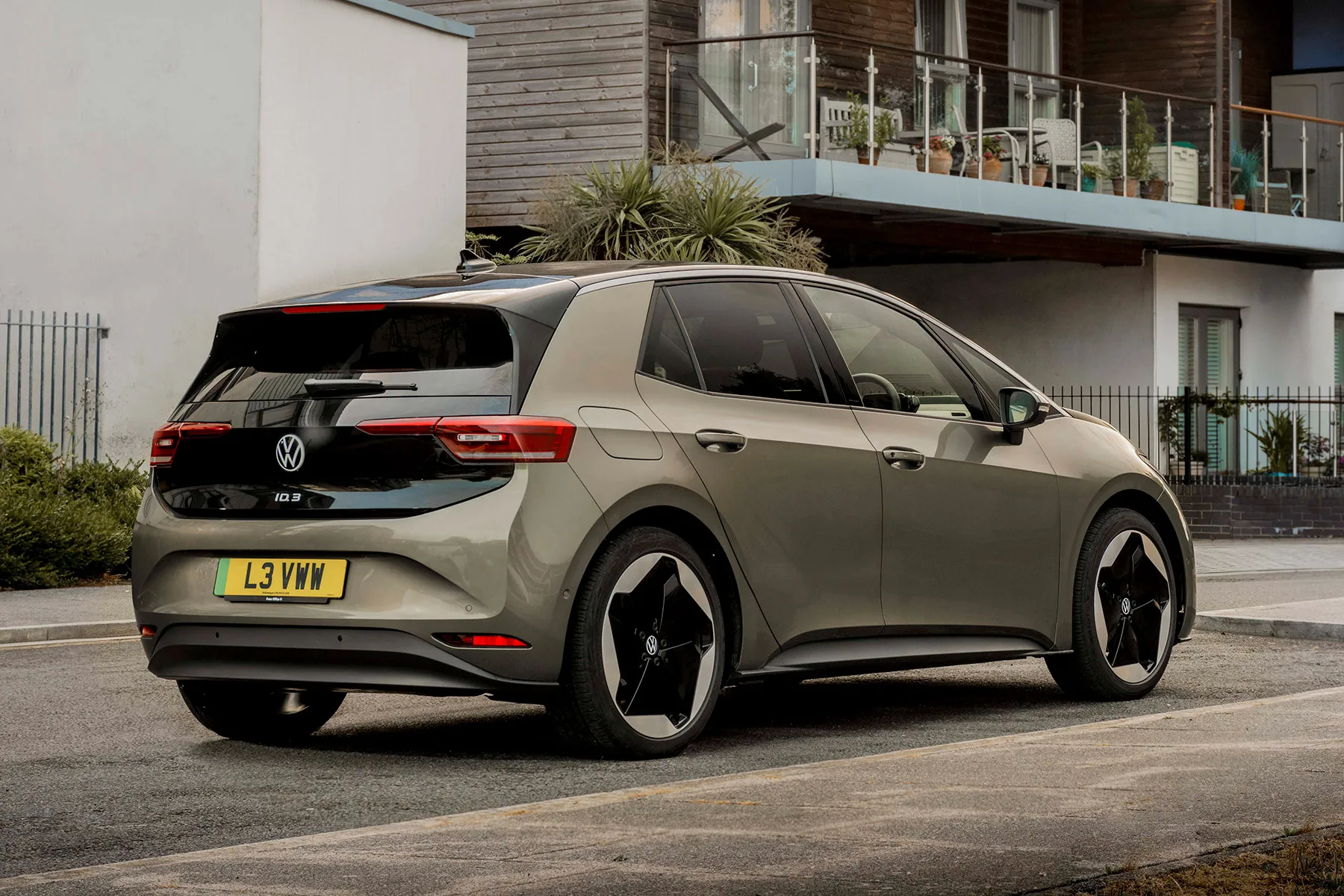
We touched on which battery size you should buy above and, while many new electric car drivers want the longest range possible, we'd recommend considering what exactly you're going to use an EV for and how it will fit into your life.
The bigger the battery, the more it'll cost to fully charge and the longer it will take. A 45kWh Volkswagen ID.3 will take around 8.5 hours to charge using a 7kW home charger, costing around £20 in the process (depending on your home electricity tariff). A 58kWh Volkswagen ID.3 will cost around £23 to fully charge (and take around 9.5 hours to do so), while a 77kWh Volkswagen ID.3 will cost about £31 and take about 12.5 hours to fully charge.
If you want to venture further afield, the Volkswagen ID.3 is capable of rapid charging at a rate of up to 170kW. This'll top the battery up to 80% in as little as half an hour, although you'll pay a premium to do so - expect to pay around 80p per kWh for the most convenient public rapid chargers.
Volkswagen ID.3 reliability and warranty
There were a few initial glitches with the Volkswagen ID.3 when it first went on sale in 2020. These were mainly software issues, though, and fixed via over-the-air updates. The updated Volkswagen ID.3 ought to be very reliable - especially as, like all electric cars, there aren't many mechanical parts to go wrong.
The Volkswagen ID.3 is covered by a warranty for up to three years/60,000 miles, while the high-voltage battery is covered for eight years/100,000 miles.
Volkswagen ID.3 insurance groups and costs
The latest Volkswagen ID.3 Pro and Pro S models are in insurance groups 25 and 27 respectively, meaning they might cost a little more to insure than older ID.3 variants. The original Volkswagen ID.3 Life was in insurance group 19, which means it shouldn't cost a great deal more to insure than an equivalent Volkswagen Golf.
If you're looking to buy an electric car with cheap insurance, you might find our guide to the cheapest electric cars to insure helpful.
VED car tax: What is the annual road tax on a Volkswagen ID.3?
As the Volkswagen ID.3 is an electric car with no tailpipe emissions, it qualifies for free car tax (VED). That's set to change in 2025.
Volkswagen ID.3 price
"A used Volkswagen ID.3 can now be picked up for around £20,000 - that's quite a chunky saving compared to the price of a brand new ID.3."
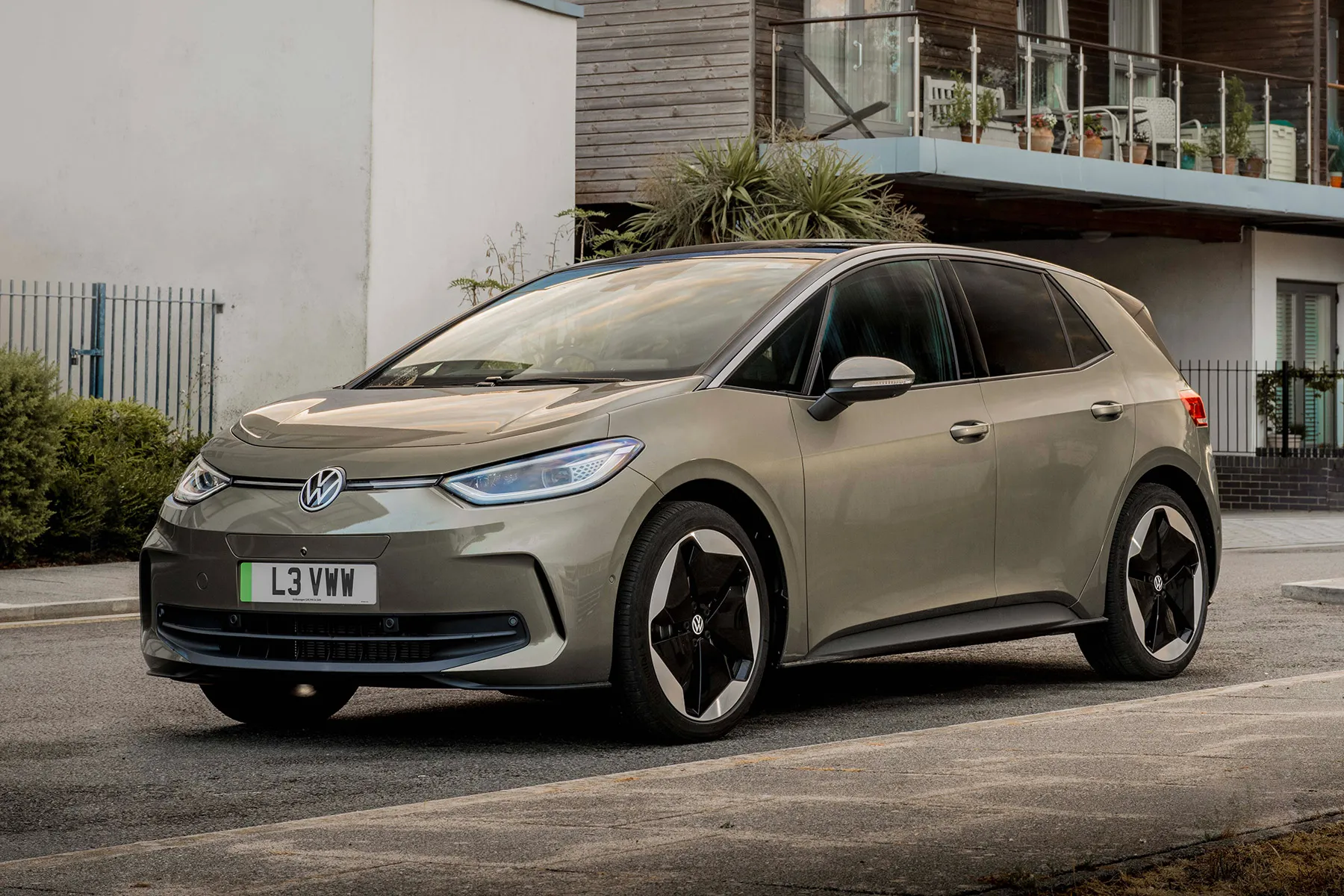
The Volkswagen ID.3 trim line-up has changed several times since orders first opened for the First Edition model in 2020. The cheapest Volkswagen ID.3 was the Pro, which cut the start price to around £29,000 in 2021.
Today, the most affordable model is the Volkswagen ID.3 Pro, which starts from around £36,000, while the ID.3 Pro S Essential is a touch more than £39,000, with the Match another £1000 on top of that.
The good news is that recent updates were so minor, you won't be missing a lot by saving cash and buying a pre-registered or nearly-new Volkswagen ID.3. We've seen as-new Volkswagen ID.3 Pro Match models available for around £26,000.
Trim levels and standard equipment
The latest Volkswagen ID.3 is available in three versions: Pure, Pro and Pro S, with each then offered in Essential or Match versions.
The Pure Essential is the most affordable new ID.3 but the ID.3 Pro Match gets extra kit, with 18-inch alloy wheels, metallic paint, heated front seats, climate control and a rear-view camera.
Standard equipment on the Volkswagen ID.3 Pro Essential includes 18-inch alloy wheels, High Beam Assist, a wireless phone charger, 10-colour ambient lighting and electrically foldable door mirrors. The ID.3 Pro Essential also come with two-zone air conditioning, heated front seats, a leatherette steering wheel, front/rear parking sensors, adaptive cruise control, camera-controlled lane-assist system, and a 12.9-inch infotainment screen.
The Match trim adds a different alloy wheel design, dynamic assistance for the headlights, a rear-view camera, rear privacy glass, Discover Pro sat-nav, and keyless entry and starting.
The Volkswagen ID.3 Pro S adds 20-inch alloy wheels, Artvelours Eco interior trim, and adjustable lumbar support.
Ask the heycar experts: common questions
Is the Volkswagen ID.3 a good electric car?
What is the range of the Volkswagen ID.3 in miles?
Is the Volkswagen ID.3 bigger than a Golf?
Get our latest advice, news and offers
Keep me updated by email with the latest advice, news and offers from heycar.
By submitting you agree to our privacy policy



